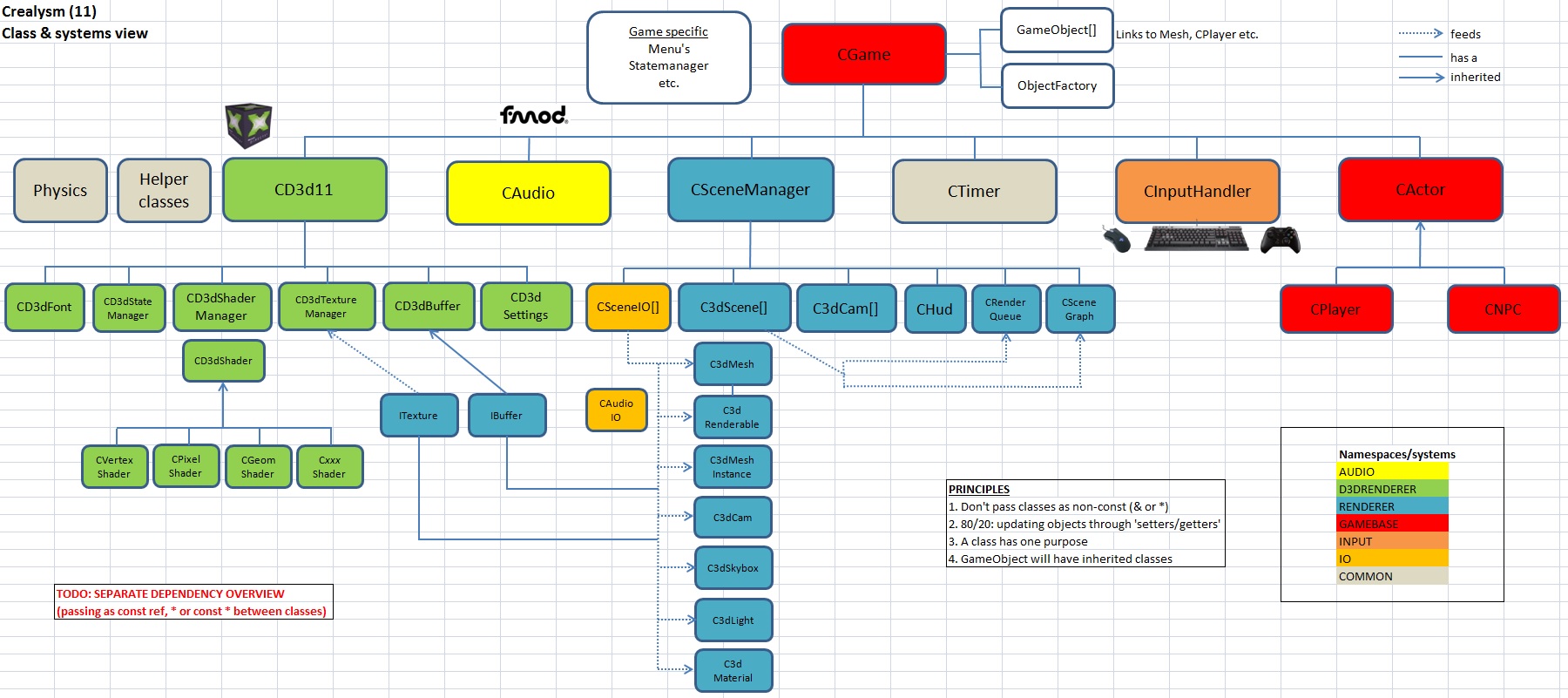For example, where would you store a mesh's vtx buffer? In my case it's the Cd3dMesh class, because CMesh is API/ platform independent and just an IO/ data thing.This depends where you want to draw a line through your code base between code that's implicitly cross-platform, and code that you will re-implement once per platform.
If you implement a "gpu buffer" (index buffers, vertex buffers, structured buffers are all the same) class once per platform (BufferD3D11, BufferVulkan, etc), then your Mesh class becomes portable. It can own a Buffer (which is a BufferD3D11/etc, hidden behind an interface).
Alternatively, Mesh can be an interface for MeshD3D11, MeshVulkan, etc, and you can implement the entire mesh class once per platform.
Personally, I like to create a low-level renderer that's implemented once per platform, and then build the high level renderer (meshes, materials, etc) on top of it (and without using any platform specific code).








